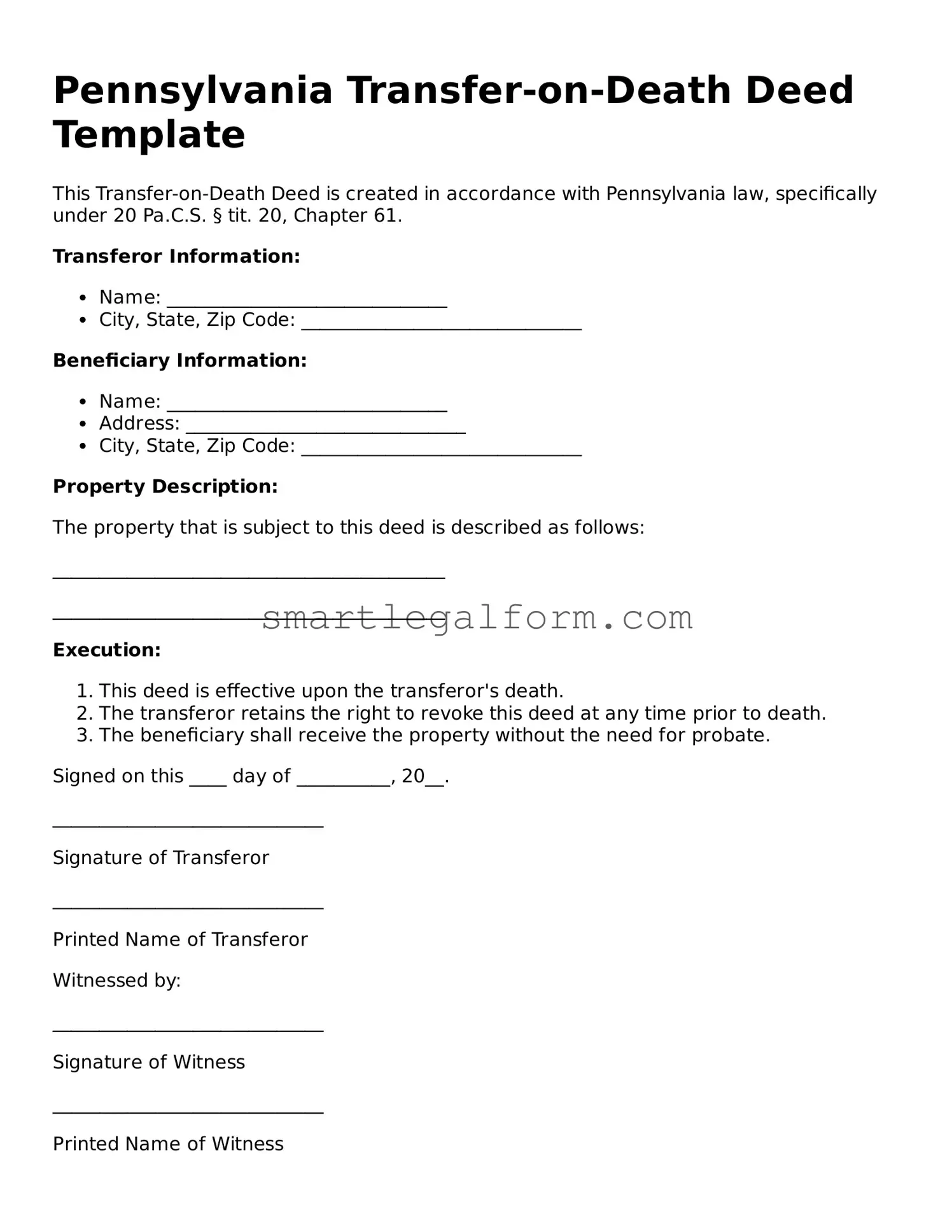Pennsylvania Transfer-on-Death Deed Template
This Transfer-on-Death Deed is created in accordance with Pennsylvania law, specifically under 20 Pa.C.S. § tit. 20, Chapter 61.
Transferor Information:
- Name: ______________________________
- City, State, Zip Code: ______________________________
Beneficiary Information:
- Name: ______________________________
- Address: ______________________________
- City, State, Zip Code: ______________________________
Property Description:
The property that is subject to this deed is described as follows:
__________________________________________
__________________________________________
Execution:
- This deed is effective upon the transferor's death.
- The transferor retains the right to revoke this deed at any time prior to death.
- The beneficiary shall receive the property without the need for probate.
Signed on this ____ day of __________, 20__.
_____________________________
Signature of Transferor
_____________________________
Printed Name of Transferor
Witnessed by:
_____________________________
Signature of Witness
_____________________________
Printed Name of Witness
This deed must be recorded with the county recorder's office in the county where the property is located. Ensure compliance with local regulations and recording requirements.
